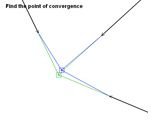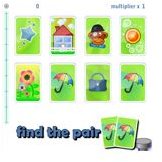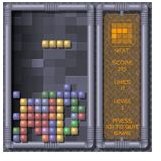Free Online Games that Help with Visual Perceptual Skills

Visual Perception
When we think about the skills children need to succeed in school, we often focus on areas such as language, reasoning, and mathematics. While these abilities are of course very important, there are others not as often acknowledged. Visual perceptual skills are those that allow a child or adult to understand the world around them, to recognize objects, put them into groups, match objects to pictures, and so forth (you can read here for a more detailed description).
The key point is that these are skills that underlie nearly all of the other tasks a child will be required to participate in throughout his or her education. For example, the ability to grasp the spatial locations and visual features of objects is crucial for mathematics. With this in mind, here are some free games and activities online that can help children and adults practice their visual perceptual skills.
Important Note: No game, online or otherwise, can correct a visual or perceptual disability or disorder. These games are for fun and to help improve the skills of children without serious difficulties. If you suspect a child or student has a diagnosable disorder of any kind, or has a visual disability, please see a doctor or psychologist. Of course, these games might help identify if a child might benefit from seeing a doctor to discuss possible therapies.
The Eyeballing Game
This is less like a game and more like a test, but interesting to complete and a very good test of visual-spatial perception. You are given a variety of tasks, and asked to move points and line segments to create bisected and symmetrical figures. For example, you might be given a circle and asked to find the midpoint, or shown an angle and asked to use your mouse to bisecting it with a line. You are given a score based on your accuracy, and after you finish the set of tasks you are shown how your score compares to the average. A great activity for adults and older children who want to practice their spatial awareness.
Eye Can Learn
While most of the links on this list lead to a single game, this resource is actually an entire website. Eye Can Learn is an excellent site full of games and activities covering a huge variety of skills. There are games that help with memory and reading speed, as well as activities that help with all kinds of visual and perceptual skills. Some test basic skills, such as eye movement and line tracking, and others are concerned with more complex abilities like depth perception, visual memory, and being able to tell the difference between two images.
Some activities are only pictures while others are more game-like (especially the memory sections), and all are simple (though some are quite difficult, such as those that test the ability to coordinate what you see with each eye). But children should find them all fun or at least interesting, and they do a great job of covering nearly every visual perceptual skill you could think of.
Flip the Cards

This is probably the toughest game on this list, and would be too frustrating for younger kids. But for kids in late elementary school or older (not to mention for adults) it can be a great test of visual memory. You are shown a set of eight cards (four pairs), and asked to identify where a particular pair was. The key is that the cards are shown to you so briefly you don’t have time to try and memorize where they were. Instead, you must rely on your visual processing system to take in the pictures it sees and remember them long enough for you to find them again.
There are several levels, and some are harder than others. In some levels you are shown the pair you need to find first, and then the eight cards. In other, more difficult levels you see the eight cards first, and only then are told which pair you need to find. There is also a variety of images on the cards, starting with ones easier to identify and moving into ones harder to tell apart. Most people won’t make it very far the first time they play, but with repeated attempts should grow more skilled at processing the pictures quickly.
Hungry Blocks
Like many free online games, this game requires quick reflexes, hand-eye coordination, and spatial awareness. You are a little yellow square, and red and green squares of differing sizes flow across the screen in various directions and speeds. Your task is to ‘eat’ as many of the green squares as you can, while avoiding the red squares. It’s a quick game and a demanding one, since it’s all over the first time you hit a red square. But it’s a great way to practice hand-eye coordination (an important visual perceptual skill) and spatial awareness.
Tetris Arcade

Tetris is one of the best visual perceptual games ever invented. It tests reflexes, hand-eye coordination, the ability to see and recognize a shape quickly, and the ability to perceive where it would best fit into the overall configuration of shapes piled up at the bottom. There are dozens if not hundreds of free Tetris games online, and this is only one example. It’s a solid version—simple to use and at a moderate difficulty. The shapes are also big and given bold colors, which would help children not familiar with the game quickly tell them apart.
edHelper
Like Eye Can Learn, this website is a collection of simple games and activities. They are all meant to be printed as worksheets, so none are interactive. But the website provides simple activities children are familiar with, like mazes, matching pictures, and connect-the-dots, that are designed to help them practice different visual perceptual skills. There are harder tasks as well, such as picking which abstract picture comes next in a sequence and recognizing a shape that has been cut away from a square and rotated. You need an account with the site to access certain features, like answer keys and clean versions for printing, but many of the worksheets can be completed by simply viewing them online, or could be printed as-is.
